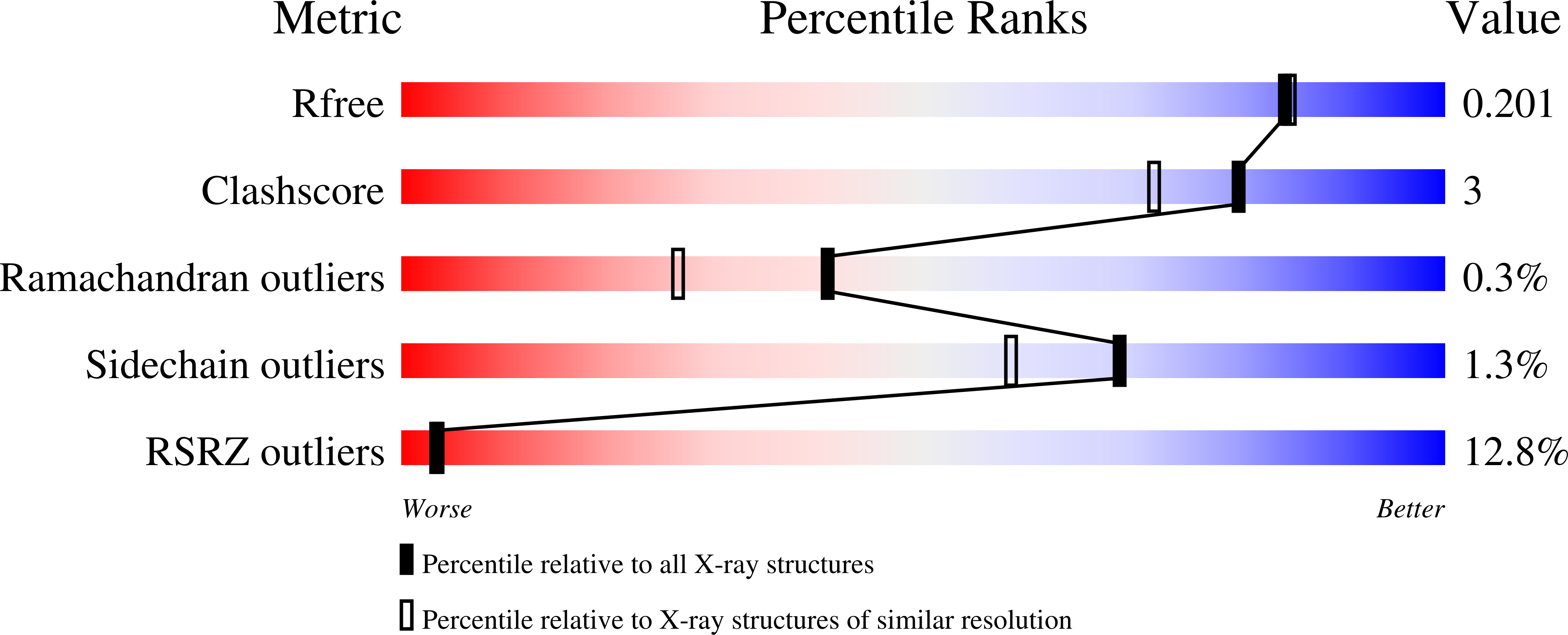EcxAB Is a Founding Member of a New Family of Metalloprotease AB5 Toxins with a Hybrid Cholera-like B Subunit.
Ng, N.M., Littler, D.R., Paton, A.W., Le Nours, J., Rossjohn, J., Paton, J.C., Beddoe, T.(2013) Structure 21: 2003-2013
- PubMed: 24095060
- DOI: https://doi.org/10.1016/j.str.2013.08.024
- Primary Citation of Related Structures:
4L63, 4L6T - PubMed Abstract:
AB5 toxins are composed of an enzymatic A subunit that disrupts cellular function associated with a pentameric B subunit required for host cell invasion. EcxAB is an AB5 toxin isolated from clinical strains of Escherichia coli classified as part of the cholera family due to B subunit homology. Cholera-group toxins have catalytic ADP-ribosyltransferases as their A subunits, so it was surprising that EcxA did not. We confirmed that EcxAB self-associates as a functional toxin and obtained its structure. EcxAB is a prototypical member of a hybrid AB5 toxin family containing metzincin-type metalloproteases as their active A subunit paired to a cholera-like B subunit. Furthermore, EcxA is distinct from previously characterized proteases and thus founds an AB5-associated metzincin family that we term the toxilysins. EcxAB provides the first observation of conserved B subunit usage across different AB5 toxin families and provides evidence that the intersubunit interface of these toxins is far more permissive than previously supposed.
- ARC Centre of Excellence in Structural and Functional Microbial Genomics, Department of Biochemistry and Molecular Biology, School of Biomedical Sciences, Monash University, Clayton, VIC 3800, Australia.
Organizational Affiliation:



















